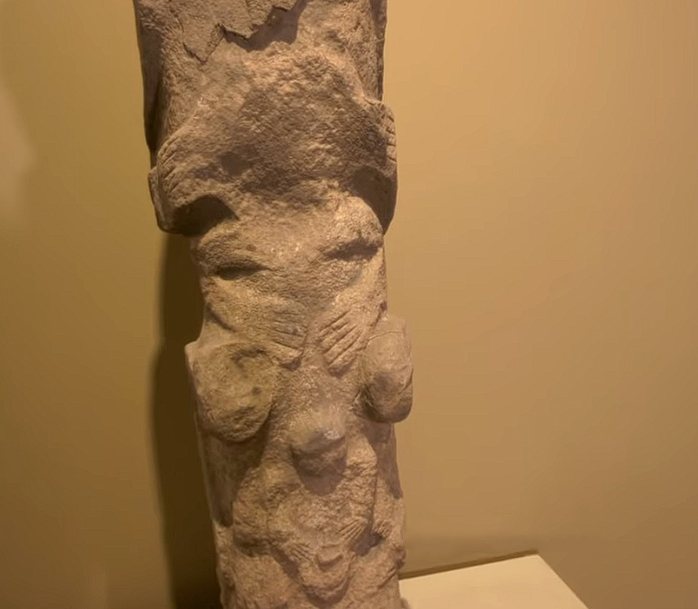Introduction
In the realm of ancient mysteries and enigmatic archaeological sites, few places captivate the imagination like Gobekli Tepe in Sanliurfa, Turkey. This prehistoric complex, dating back over 11,000 years, is renowned for its intricate stone pillars, adorned with intricate carvings of animals and humanoid figures. Among these remarkable structures lies a particularly perplexing artifact, a stone pillar that has been defaced in a way that leaves us pondering its significance. In Season 12, Episode 16 of “Ancient Aliens,” researchers delve into the mysteries surrounding this pillar, raising questions about its connection to humanity’s otherworldly origins.
The Mysterious Encounter
The episode opens with author and researcher Andrew Collins embarking on a journey to the Sanliurfa Archaeology and Mosaic Museum in June 2017. Located a mere 10 miles from Gobekli Tepe, this museum houses one of the most enigmatic stone structures on Earth. Collins’ mission is to meet with curator Taha Ozyavuz and unravel the secrets concealed within this ancient relic.

As they inspect the stone pillar, Collins and Ozyavuz are struck by its unusual features. The pillar exhibits three distinct figures of varying sizes. It’s this peculiarity that prompts the question: What do these figures represent, and why were two of them deliberately defaced or destroyed in antiquity? Did someone seek to conceal a profound truth about humanity’s origins?
The Extraterrestrial Connection
Enter the realm of ancient astronaut theory, which posits that extraterrestrial beings may have played a significant role in shaping human history. Within this context, the defaced stone pillar at Gobekli Tepe takes on a new dimension of intrigue. Could it hold clues about a genetic lineage that links us to extraterrestrial ancestors?
David Wilcock, a proponent of ancient astronaut theory, speculates about the pillar’s symbolism. He points to a larger being depicted on the pillar, possibly an extraterrestrial entity, holding another figure with human-like characteristics. This second figure appears to be in the act of giving birth to a human baby. Could this be evidence of a breeding experiment that led to the development of modern humans as we know them today?
William Henry adds to the mystery, emphasizing the significance of totem poles as repositories of information. In this light, the stone pillar at Gobekli Tepe could be seen as an ancient encyclopedia or time capsule, preserving a genealogical record. Following this lineage, one might arrive at the conclusion that our distant ancestors were, in fact, non-human, implying an extraterrestrial connection.
David Childress suggests that the primary motive behind preserving such information was to pass down knowledge about our extraterrestrial creators to future generations. The defaced stone pillar, then, becomes a cryptic message from the past, waiting to be deciphered by those who seek to unveil the secrets of our origins.
Video:
Conclusion
The defaced stone pillar at Gobekli Tepe remains a tantalizing enigma that invites speculation and contemplation. While the “Ancient Aliens” episode raises intriguing questions about its purpose and symbolism, the answers remain elusive. Was it an attempt to obscure the truth about humanity’s extraterrestrial origins, as some theorists suggest? Or does it hold a deeper, more intricate narrative about our distant past?
Gobekli Tepe continues to be a testament to the mysteries that shroud our ancient history. As researchers and archaeologists delve deeper into its secrets, we can only hope that the truth about this captivating site and its defaced stone pillar will one day be unveiled, shedding light on the profound connection between humanity and the cosmos. Until then, it remains an enduring enigma, beckoning us to explore the realms of ancient aliens and our own origins.

15 thoughts on “Exploring the Mystery of Gobekli Tepe’s Defaced Stone Pillar”
Comments are closed.